Creator studio
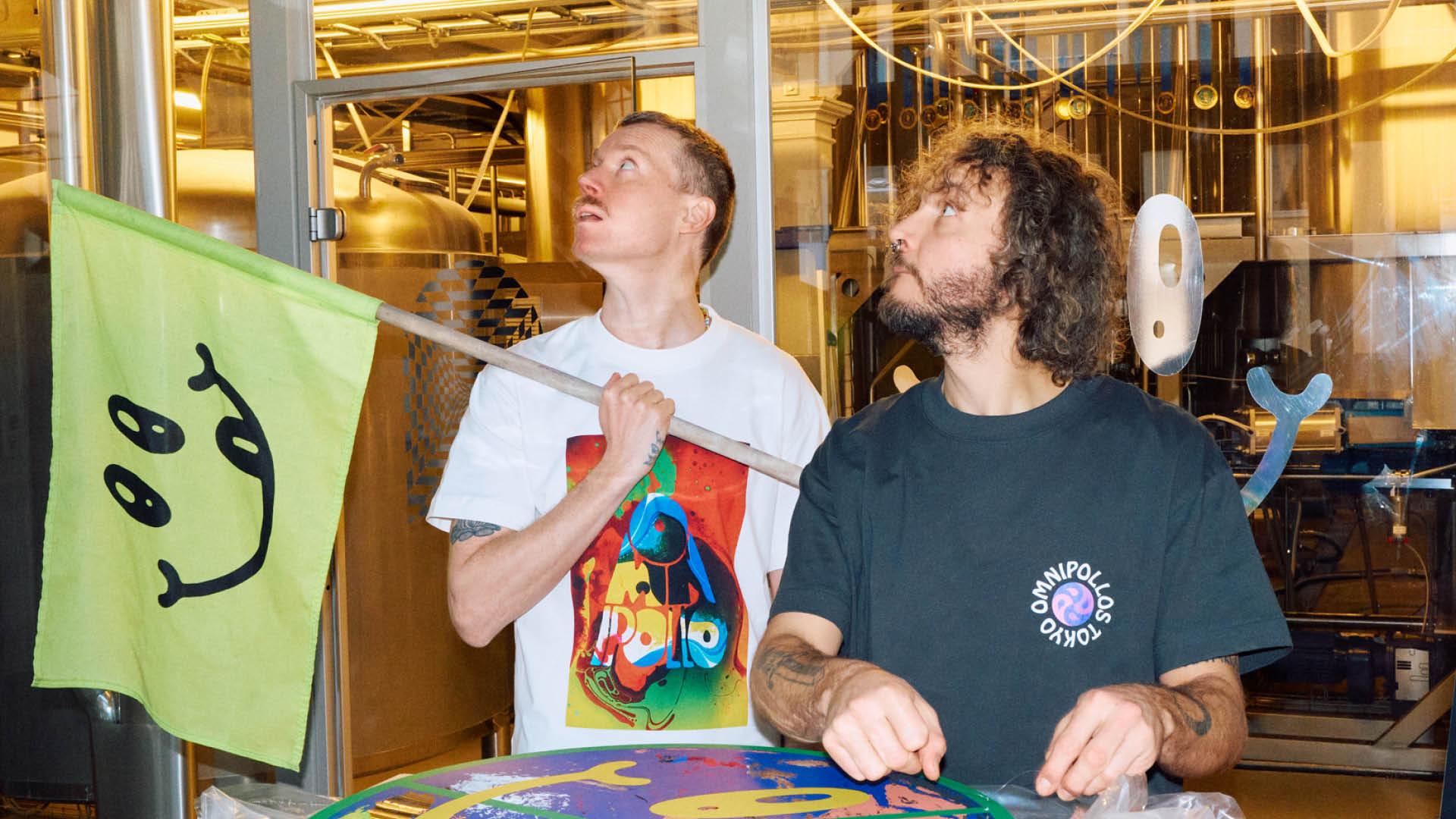
Creativity on Tap
Hi Karl, you’re at home too!
I’ve got a 12-year-old kid and two cats, so I like working at home. Having an old computer at home forces you to be a bit more analogue but also gives you a different pace.
Everyone has their own methods but for me, I like this flex between home and studio. However, I can only really be in the zone when I’m at home. In the studio, there are distractions – email, meetings, and there are always people around. It feels like there’s some sort of invisible pressure to perform when I’m there.
Do you work best from home or the studio?
Where or how do I work best? I’ve been thinking about this my whole professional life, whether freelancing or otherwise. I work best in small groups but also sometimes need to lock myself into the zone. But I get restless and have to get out when I’m on my own for too long – I need the inspiration of group dynamics and outside forces.
Right now, I really enjoy the opportunity to be away from the conventional workplace. My studio, at the Omnipollo Church – our base, is great but it’s nice to be away from that and get the vibe going in my own home.
I’m in a good place right now. My whole working life I’ve been told I’m too unconventional – I’m too all over the place for advertising and don’t really fit the white cube art scenario. But these days I’m in a place where I don’t have to conform to either of those stereotypes as a creator.
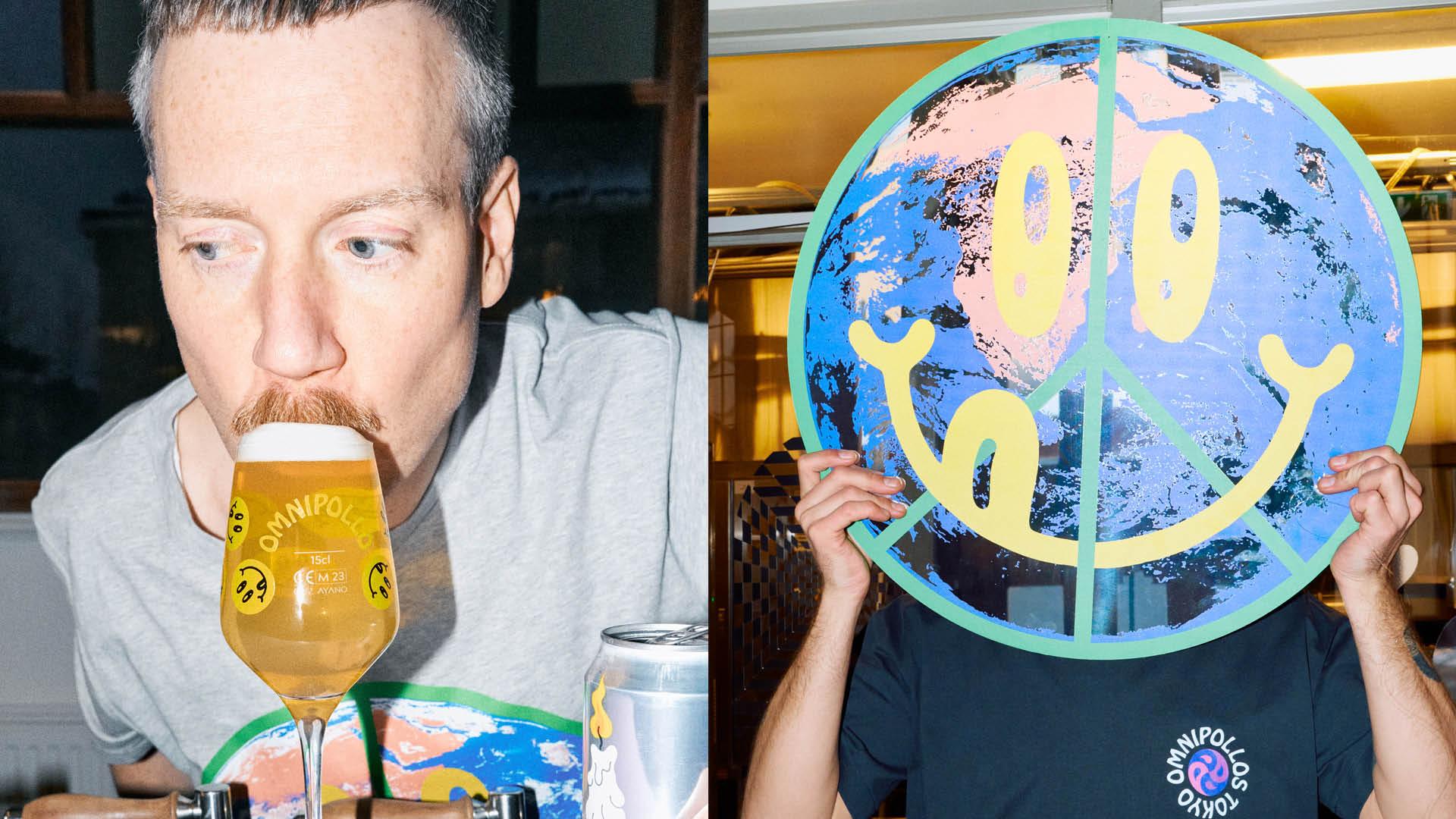
We should probably let you do a proper intro, right?
For the last few years, I’ve been pretty autonomous. And every day, when I wake up, things can go anywhere. In terms of Omnipollo today, we’re bound by certain business considerations and have monetary responsibilities but it’s still a creative project. It’s a creative vessel.
Outside of Omnipollo, I’m still doing things for exhibitions or collaborations with other artists and craftspeople. I’m leaning towards being an artist or visual artist these days, but when I was younger, I wouldn’t have called myself that.
I became a graphic designer because it was the only thing I knew. I thought being an artist was the reserve of super-talented people. But I always wanted to make drawings. But it’s hard to make a living from making comics. So, I transitioned into graphic design in the 90s when everything in Sweden at that time was focused on the advertising industry. Now, things are more aware and politicised but you were automatically put in a box back then. At that time, I got a lot of backlash for not following conventions. Back in the 90s, it was important to have a defined portfolio.
Graphic design was about selling stuff, and I didn’t know how to get out of the box. But I was aware of other parts of Europe that were much looser and more open, like the Netherlands. And there you could use graphic design to express yourself more spiritually and politically.
I always snuck drawings into my work. And in the end, my style became more about the images, like the work of Milton Glaser, one of my biggest influences. He called himself a graphic designer from very early on. In the 90s, many graphic designers hated being called an artist. These days, there is no divide between graphic design and art.
Blurring disciplinary lines is important for me personally. Why decide how to approach a thing in a specific way before you begin? That’s how I approach things like Omnipollo – I ask myself how I want to do this thing rather than question how someone else might do it.
There are lots of cliches built into these explanation models within creative industries. I’m all for blurring borders… It’s way more interesting to look into the theme or attitude of a project rather than examining how it has to be technically or finding the right way to do things.
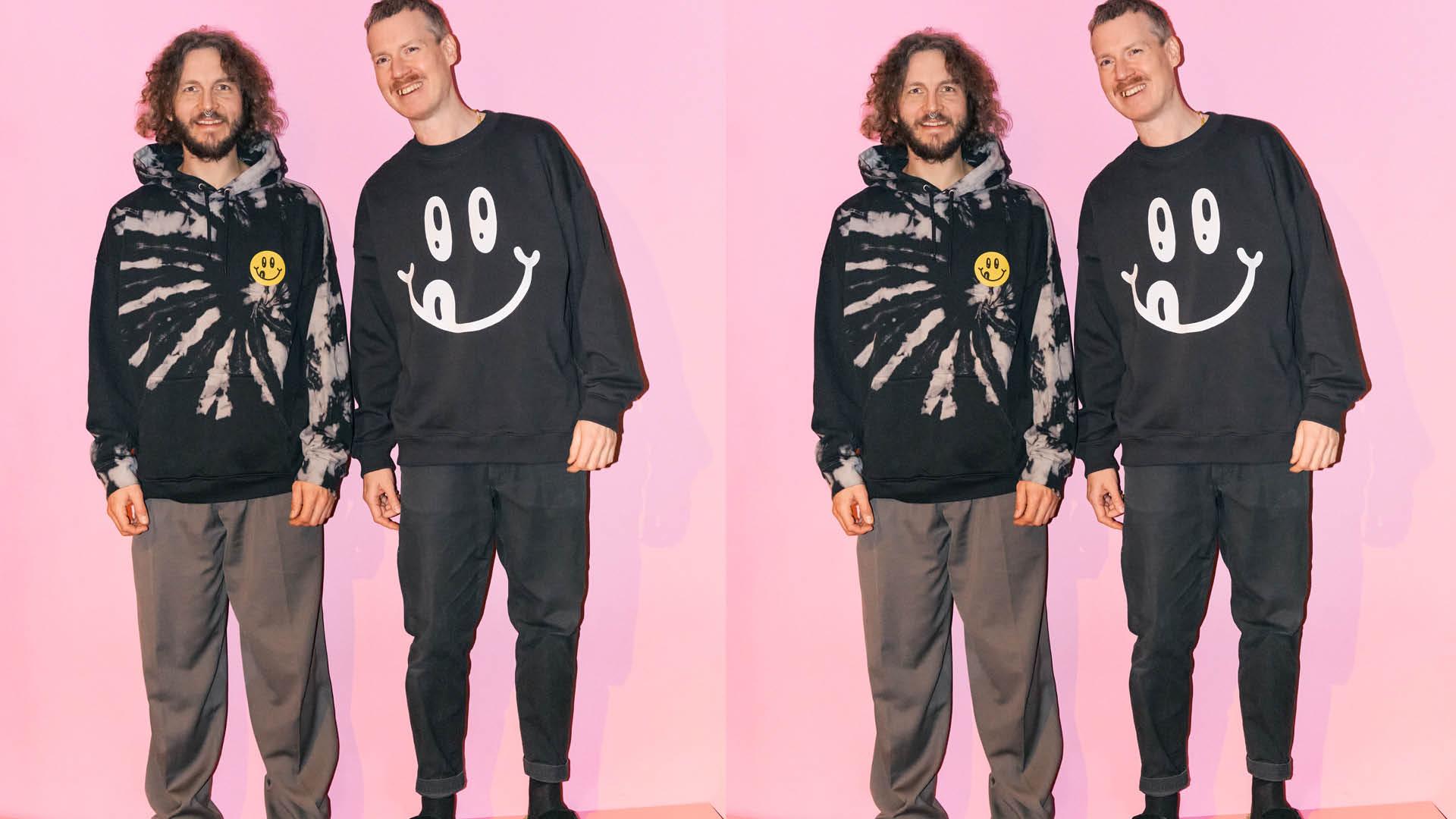


Has your father ever said anything about you following him into graphic design and art?
My dad is a calligrapher and typographer so he works with text. When I was growing up, he worked a lot with political left-wing newspapers. When he studied at Konstfack in the late '60s, it wasn’t visual or fine arts that were the most popular among his peers – they all wanted to study to become art teachers, to influence the next generation. Maybe in the future, everyone will want to return to that place and devote their lives to teaching 12-year-olds about art?
As a kid, I spent a lot of time at my dad’s different workplaces including newspapers, magazines and printing houses. I saw creative things coming together. Even though a lot of the work wasn’t that interesting for a young kid, I was fascinated by all the technical aspects of what they were doing. Noisy offset printing presses, how to work a wax machine, the process camera in a darkroom and stuff like that.
They’d put me in the corner while they were having their editorial meetings with a Fritz the Cat comic by Robert Crumb. It blew my mind as a 6-year-old. It’s still inspiring me today - these American underground comics from the 60s and 70s. I still study these and try to work out how they combine graphics and images to create messages.
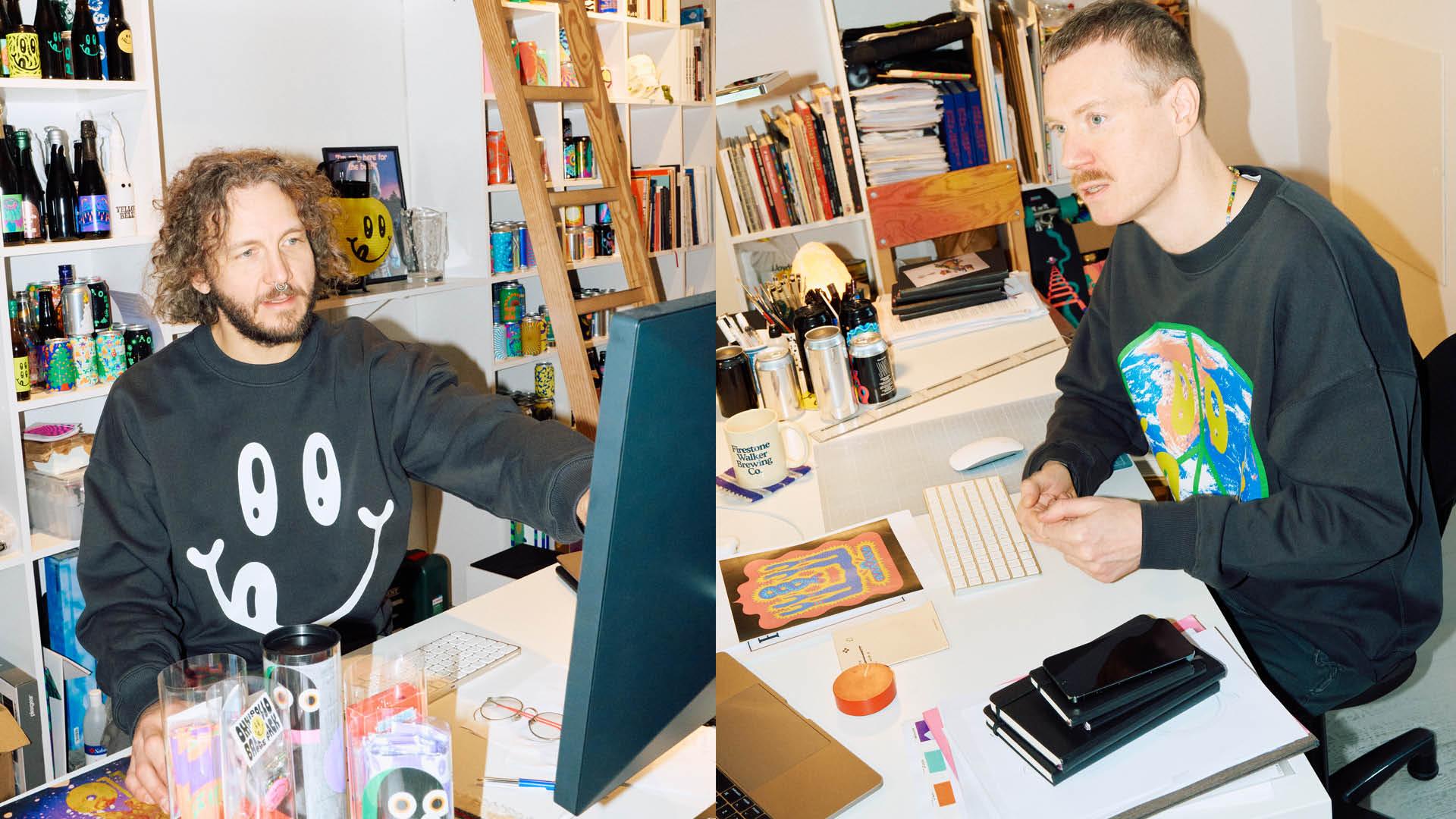
Omnipollo is a creative force. And an unlikely meeting of two really different industries – brewing and art.
I don’t think it matters what you do, it’s about how you channel your ideas and get your voice out there. I try to look at everything in front of me as a canvas for expression – whether it’s a newspaper, fashion or a beer can. People only see a certain perspective of themselves wearing garments – from a mirror or a photo or from a top-down perspective when they look down at themselves. But a beer can is something people pick up and examine. The can is a captive art form where your hand is the frame for the art on the can or label. When we started Omnipollo, and even now, it’s cool to see someone studying my art on cans.
As a canvas a can is interesting. It’s always going to be a cylindrical shape. It’s a bit like a record cover – it has a set format. Even with this restriction, using it right can enhance your experience, provoke your thoughts, or even change your mind about something and suggest a new perspective on a subject. I always liked album covers that give me a reward for the time I spend looking at them, and I think what we try and do with Omnipollo as a brand is similar to that.
When we began, I told Henok (the other co-founder of Omnipollo) I didn’t want any text on the bottle; I wanted the name to be weird and the artwork silk screen printed instead of using a printed paper label. The idea I had in mind was high quality but relatable. But it was definitely not straightforward. I wanted it to be an image that said something about what may have gone on in Henok’s head. It was a keyhole with lots of stuff in it a visual metaphor for what was going on inside his head – his vision – and we were looking into it from our perspective as viewers.
It resonated with him – this risk of failing while doing something you really love. But weighed against that, there's the chance of really succeeding while doing something you love.
Almost immediately I knew Omnipollo was going to be different. Not groundbreaking, as there were and still are lots of craft beer brands doing interesting things, but certainly different.
Early in the development of the brand, Henok took me to a craft beer bar so I could see the care and passion in the industry but also the fans of the beer. But back then it was a weird crowd. Everything looked basically the same and, for me, it was kind of boring. Lots of the brands had this little steampunk/fanziney feel, which is fine – but I didn’t want to do that. On the flipside you had this classic Belgian style, all gold labels and stuff. Again, fine but I didn’t want to do that either. So, I did what I wanted to. I wanted to be thought-provoking but also maybe provocative.
Me and Henok are big fans of the beer scene. But we thought, what if we could mutate that experience and sell it to even more people who can be inspired by how the drink looks, smells and tastes? And package that in a way that almost everyone could appreciate if they wanted. I started to put a little humour in my Omnipollo work, but also, sometimes, I added some element of pretension or politics or social issues into the work.
Today, Omnipollo is a balancing act. It’s easy in the beginning, to fail doing something you love. But as you grow and be more successful, there’s more responsibility. We’re quite a fast, slim organisation and make quick, radical decisions, which is a great strength. But we want to try and preserve this initial original attitude. We still trust each other 100%, which is very important – I’m Henok’s biggest fan. We are good at maintaining the vibe we have had from the start. And we try to always do what we’re best at.
If there is an aspect of my work I’d like to explore more, it’s words. I sometimes wish I was better with words; to be able to add more words and messages to my work. But I’m mainly a visual artist. I keep the number of words on our cans to a minimum and let the art do the talking.
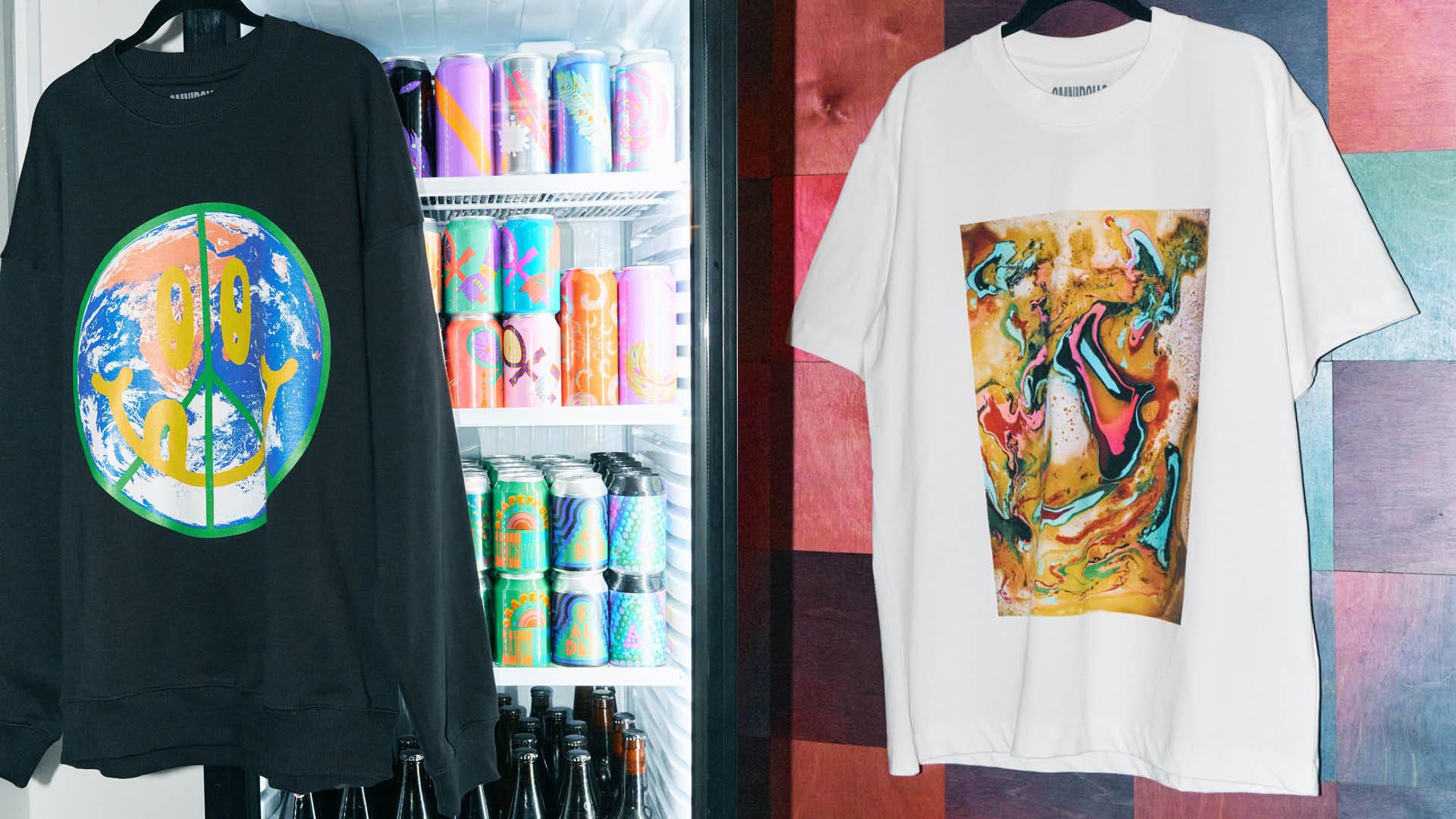
Can we talk about the vending machine?
At one time, we had an online store where we sold beer. And to sell beer to people in Sweden wasn’t a profitable idea as it's a government-run monopoly with loads of restrictions. You can do it from outside Sweden. But it’s hard to sell beer online if you’re based here. The online store was called the Omniopllo Vending Machine. And someone said, ‘What if we did an actual vending machine at the church?’
Personally, I’ve never been a fan of a craft beer shop having its own gift shop. It’s pretty uninspiring most of the time. It’s just a logo on a t-shirt and it’s unnecessary.
If we’re going to make an Omnipollo t-shirt, let’s try to at least make it interesting. Not something typical of the craft beer scene. So we did a few and put those in the vending machine. We sometimes have cassettes of bands for sale. We just did a Christmas market in the machine with different artists, that was great.
It’s not as romantic as it sounds because you need to program the machine and clean it a lot, or it stops working. But we wanted this thing to ooze creativity and resonate with people. We’re constantly exploring how to use it.
A lot of the creativity for me as an artist comes from a set of limitations. Whether it’s the framework you get given by having to fit something into the vending machine, like a pair of jeans or a beer bottle. I’m always inspired when I explore an odd solution to a problem, and it seems to work.
I want our merchandise to have a certain feeling that gives everything about us a wider dimension that inspires people. The new merch we’re making with Creator Studio is going to enhance people’s perception of the brand and the things we do but in expected forms. We want to turn a normal object into something amazing.
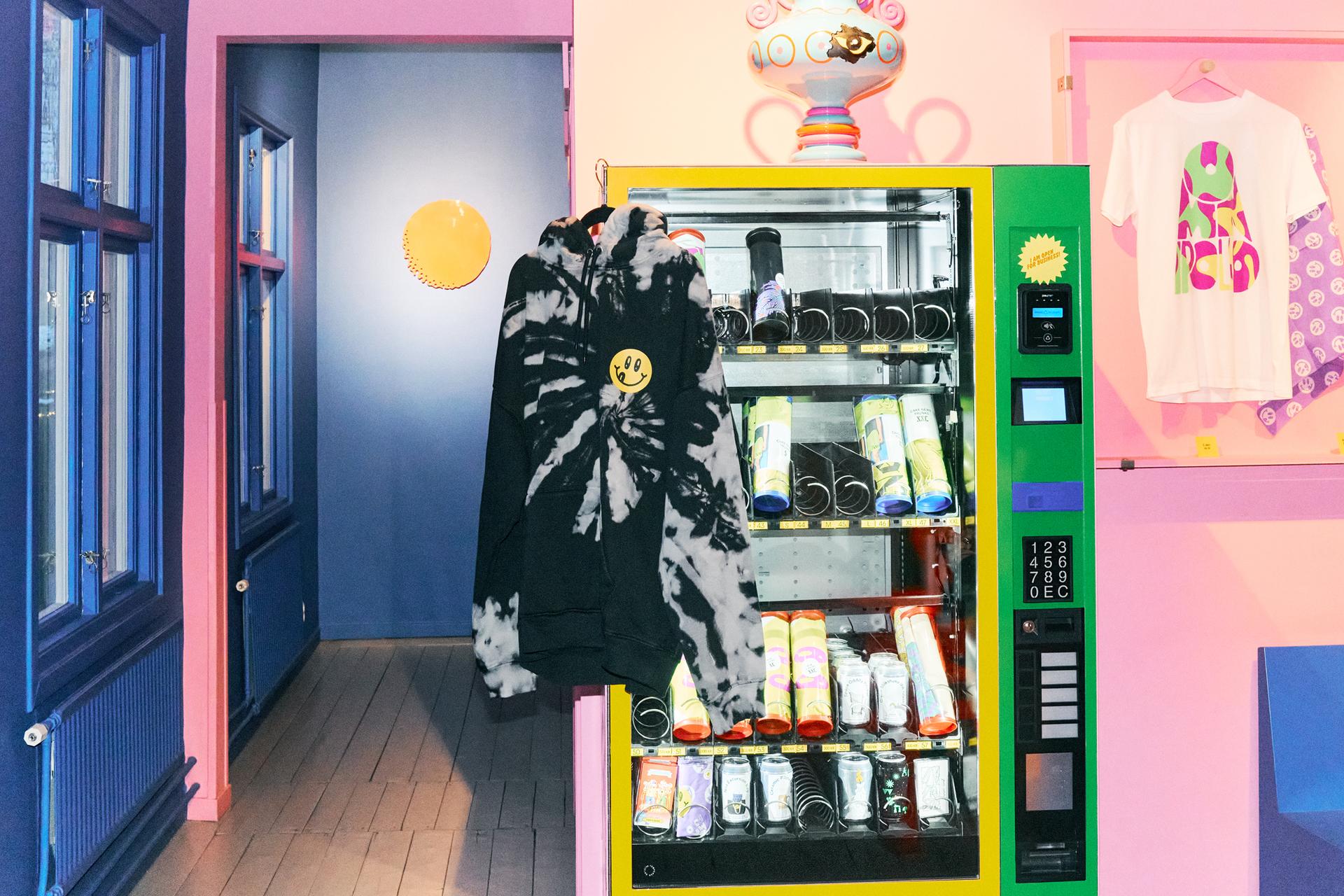
What’s the future hold for you?
If you work in this industry, you have to stay on your toes and keep developing all the time or you’ll become obsolete. With Omnipollo we’re looking for things that don’t exist, things that are not there but make sense when they do.
Sadly, everything that goes into beer is super expensive now because of global economics and turbulence. Again, another restriction to push against! It’ll force us to be better and make super interesting things. But if we go under, at least we had fun doing it. Fail doing something you love…
content policy
content policy for uploaded artworkscareer
see open positions© creator studio 2024 - Part of H&M Group